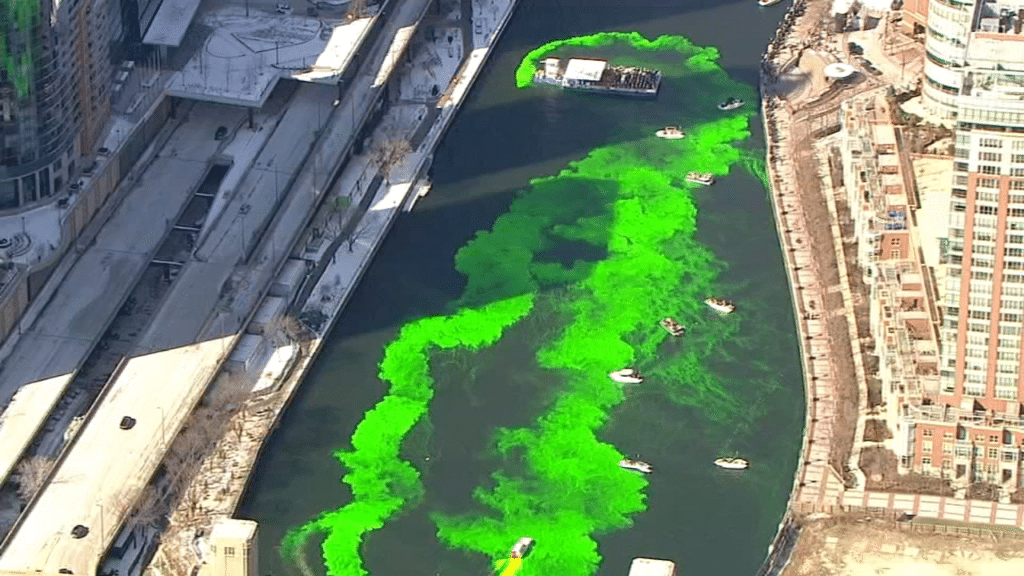Everything turns green as St. Patrick’s Day approaches, including the popular Chicago River. The dyeing of the Chicago River has become a yearly tradition in commemorating St. Francis Day. However, the river has been dyed green for several decades. We’ll explore the origins of creating this vibrant waterway.
An effort to clean
In the 1900s, the Chicago River was a city waste depository. One of the river’s tributaries, Bubbly Creek, got its name from the methane gas bubbles that would always rise to the surface due to waste from a slaughterhouse.
Courtesy: WTTW News
When Richard J. Daley was the mayor of Chicago in 1955, he tasked city workers to find where the sewage came from. Then, they used green dye to locate the source of the waste that polluted the water.
The birth of the product
Since it makes the river green in color, it’s only normal to assume the dye powder is also green. However, that assumption couldn’t be more wrong. Ironically, the dye used isn’t a shade of green at all.
Courtesy: NiCHE
The powder used to make the Chicago green is orange in color. Interestingly, before it was changed to a powder, the dye used to be an oil-based product. The formula for making the dye remains top secret.
It could have been on a larger scale
Today, the green Chicago River is a bold statement that gets us all in the mood to celebrate St. Patrick’s Day. It could have been a much bolder statement, considering the mayor’s original plan.
Courtesy: Live Science
Aside from locating where sewage was coming from, the mayor proposed green to celebrate St. Patrick’s Day. His initial plan was to dye part of Lake Michigan green, but he was advised to dye the smaller Chicago River instead.
Spreading the dye
In the early 1960s, city workers dumped a large quantity of the dye into the river, making it green for about one week. However, the idea of using fire extinguishers was born in pursuit of a faster method. It didn’t go well.
Courtesy: ABC7 Chicago
Spread by the wind, the powder covered more than 100 cars and the Wrigley Building instead. However, the method of using motorboats proved effective and is still being used today. One motorboat pours the powder, and the other stirs it.
What does it mean today?
From sewage source detection to St. Patrick’s commemoration, the annual practice of dying the Chicago River green has evolved in significance. But, even now, it’s not all about St. Paddy’s.
Courtesy: Curbed Chicago
The Chicago River can be treated any way people want- and dyeing it green is one way to depict the idea. The dyeing tradition doesn’t seem to be going anywhere in the next decades or even centuries.







